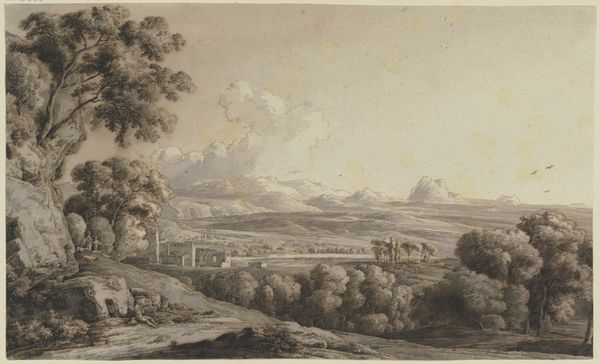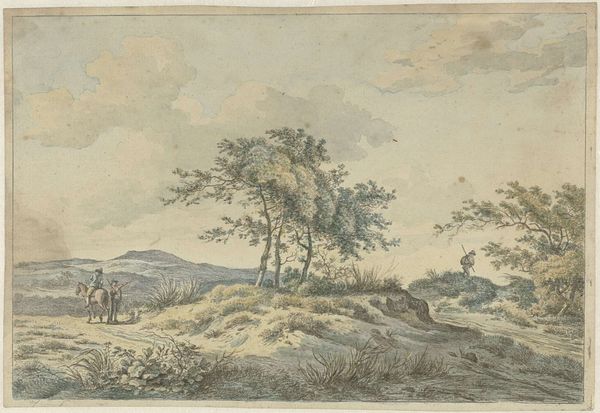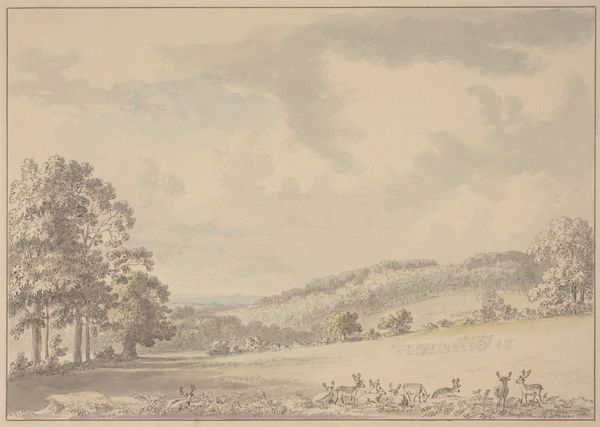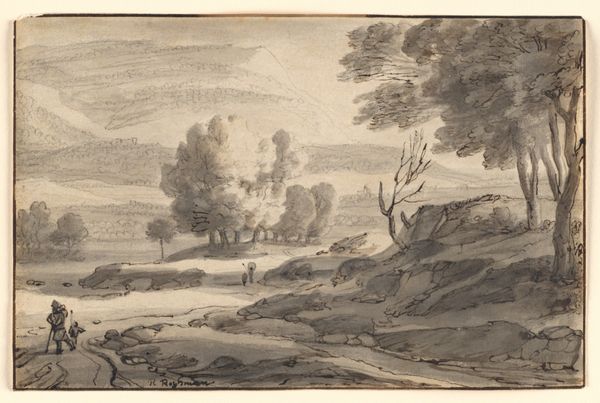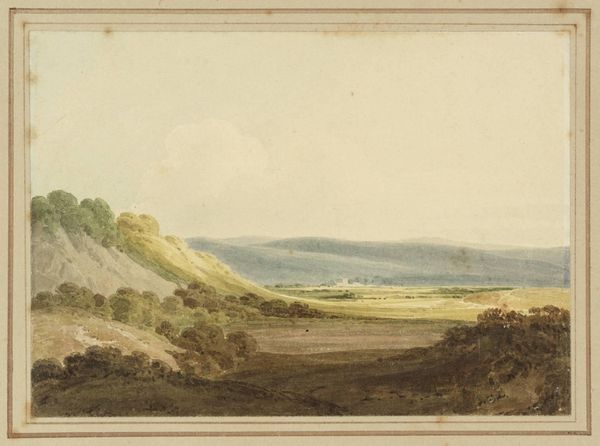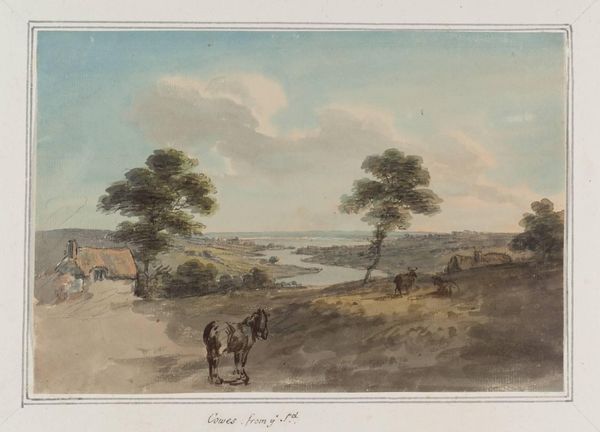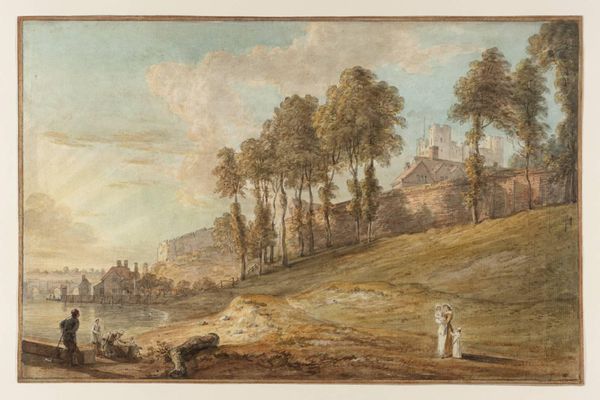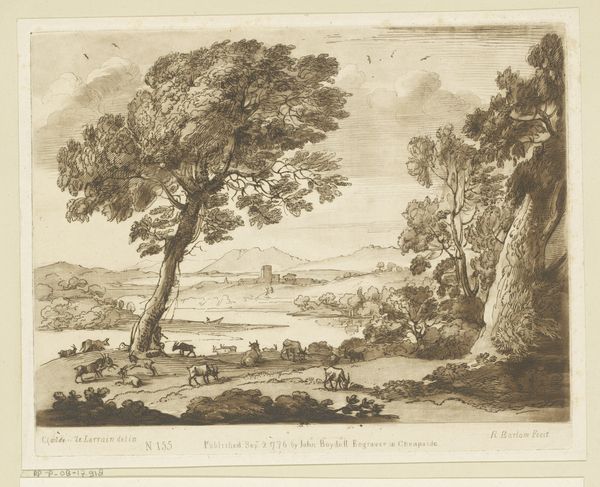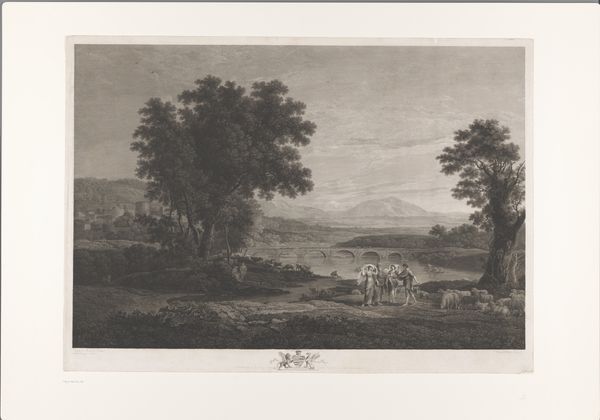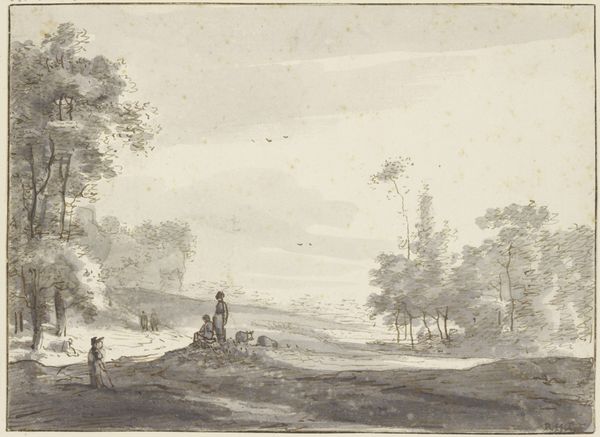
Rechts ein Sandabhang mit einem dürren Baum, an dessen Fuße zwei Frauen und zwei Männer sich unterhalten
0:00
0:00
drawing, plein-air, watercolor, chalk
#
drawing
#
netherlandish
#
toned paper
#
plein-air
#
landscape
#
watercolor
#
coloured pencil
#
chalk
#
15_18th-century
#
watercolor
Copyright: Public Domain
Gerrit Toorenburgh made this watercolor painting, likely on paper, sometime in the 18th century. The use of watercolor allows for a luminous, transparent quality, and the artist has taken full advantage of this. Notice the thin washes of color, layered to create depth and atmosphere. The social context here is intriguing. On the one hand, the scene depicts an idealized rural landscape, with figures leisurely conversing by a sandy embankment. On the other hand, the very act of painting landscapes was tied to land ownership and agricultural production. The scene is meticulously observed, but also carefully composed. The materiality of watercolor itself speaks to a wider culture of leisure and refinement. It was a medium favored by amateur artists, often wealthy individuals who had the time and resources to pursue artistic hobbies. But it was also used by professional artists like Toorenburgh to create works for sale, catering to a growing market for picturesque views of the countryside. The painting offers a glimpse into the complex relationship between art, nature, and society in the 1700s.
Comments
No comments
Be the first to comment and join the conversation on the ultimate creative platform.

